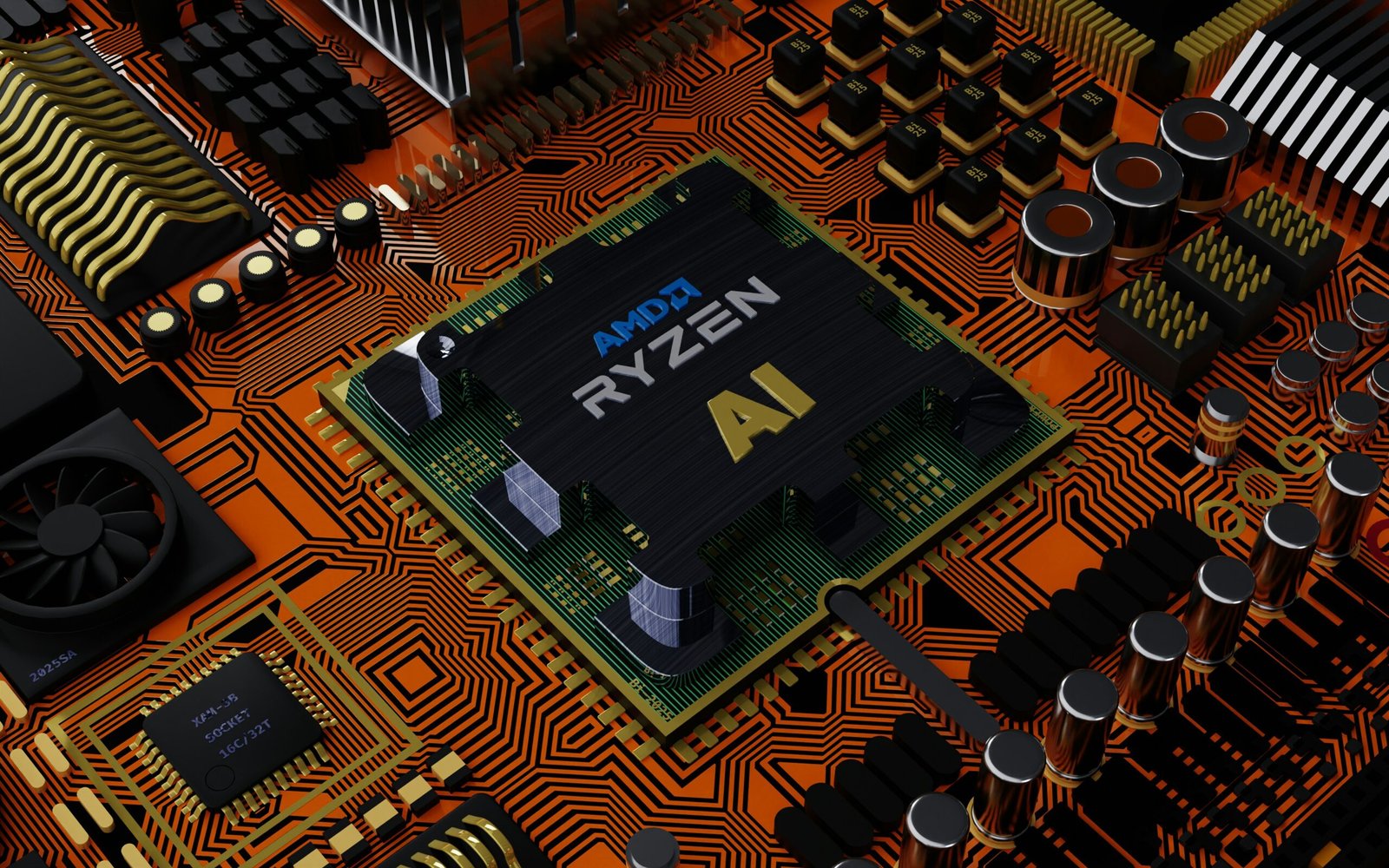The Evolution of Mobile Technology: From Simple Phones to Powerful Handheld Computers


Introduction to Mobile Technology
Mobile technology has transformed vastly since its inception, reflecting a rapid progression in both its capabilities and importance. Originally developed as a means of simple, wireless communication, the earliest mobile phones were bulky, rudimentary devices with limited functionality. These early models served primarily for voice communication, a revolutionary advancement at the time, allowing individuals to connect across distances without the constraints of wired telephones.
As the decades progressed, the evolution of mobile technology advanced at an unprecedented pace. The introduction of digital networks in the 1990s marked a significant milestone, enabling features like short message service (SMS) and basic data connectivity. The turn of the 21st century witnessed even more dramatic changes with the advent of smartphones, embodying a convergence of technologies that transformed these simple phones into powerful handheld computers.
Today’s mobile devices are potent multi-functional tools, integrating capabilities such as internet browsing, high-definition photography, GPS navigation, and an array of applications that cater to virtually every aspect of daily life. The integration of high-speed data networks, advanced operating systems, and sophisticated hardware has rendered modern smartphones indispensable in both personal and professional settings, underscoring their significance in contemporary society.
The continuous innovation within the mobile technology sector reflects not just an improvement in device performance but also a profound impact on global communication, commerce, and accessibility of information. As these two components have evolved together, they have fundamentally altered how we interact, work, and socialize, underscoring the profound influence of mobile technology in modern-day existence. This blog post delves deeper into the transformative journey of mobile technology, exploring its milestones, current advancements, and future prospects.
The Birth of Mobile Phones
The inception of mobile technology dates back to the early 1980s, a period marked by significant innovation and groundbreaking advancements. Among the most notable milestones was the introduction of the Motorola DynaTAC in 1983, which holds the distinction of being the first handheld mobile phone available to the public. This device, conceptualized by Martin Cooper and his team at Motorola, revolutionized telecommunications by untethering communication from fixed locations.
The Motorola DynaTAC, often affectionately referred to as the “brick phone” due to its considerable size and weight, represented a leap forward in mobile technology. Measuring approximately 10 inches tall and weighing over 2 pounds, early mobile phones were far from the sleek, lightweight devices of today. These early models featured a monochrome display, a thick antenna, and a cumbersome form factor that was a far cry from the user-friendly designs that would follow.
Despite its bulk, the DynaTAC offered 30 minutes of talk time and required a staggering 10 hours to recharge its battery. These limitations, while significant by modern standards, were groundbreaking at the time. The ability to make calls on the go without being tied to a landline was a novel concept that paved the way for the mobile communication revolution.
The technological constraints of early mobile phones extended beyond battery life and size. Network infrastructure was in its infancy as well, with the initial systems relying on analog signals that were prone to interference and signal loss. Additionally, the cost of owning and operating a mobile phone was prohibitive; the DynaTAC itself retailed for around $4,000—a substantial investment for most consumers.
The birth of mobile phones was a crucial chapter in the history of mobile technology. Early advancements set the stage for rapid evolution, fostering a relentless drive towards greater portability, enhanced functionality, and improved user experience. These initial steps laid the foundation for the sophisticated, powerful handheld computers that define mobile technology today.
The Rise of Feature Phones
Following the era of basic mobile phones, the introduction of feature phones marked a significant evolution in mobile technology. Feature phones emerged as a bridge between simple communication devices and the advanced smartphones of today. Unlike their predecessors, feature phones offered enriched functionalities such as text messaging, limited internet browsing, multimedia messaging service (MMS), and basic games. These advancements in mobile technology began to reshape communication habits and set the groundwork for future innovations. Key models and manufacturers played instrumental roles in this transformative phase.
One of the hallmark models of this period was the Nokia 3310, released in 2000. This device was celebrated for its robust build and long battery life, features that made it a staple for millions of users worldwide. It also introduced users to the beloved game “Snake,” which became synonymous with mobile gaming.
Another pivotal model was the Motorola RAZR V3, launched in 2004. With its sleek, razor-thin design, the RAZR quickly became a cultural icon. Besides its visual appeal, the RAZR offered functionalities that included polyphonic ringtones, a VGA camera, and limited internet capabilities, revolutionizing how users interacted with their phones.
On the manufacturer side, companies like Nokia and Motorola dominated the feature phone market. Nokia’s dominance was evident with models such as the 1100 and the high-end Communicator series, which catered to business professionals by offering email functionalities and limited web browsing. Similarly, Motorola’s innovative designs and robust engineering made it a formidable player in this era.
The rise of feature phones diversified communication methods beyond voice calls. Text messaging became a widely adopted practice, allowing people to communicate more flexibly and conveniently. Basic internet access turned mobile devices into tools for information retrieval, albeit limited by the technology of the time. These elements collectively contributed to changing communication habits, making mobile devices an integral part of daily life.
“`html
The Advent of Smartphones
The late 2000s marked a transformative period in mobile technology with the advent of smartphones. These revolutionary devices redefined the concept of mobile phones by merging traditional telephony with advanced computing capabilities. The release of the Apple iPhone in 2007 can be seen as a pivotal moment in this evolution. The iPhone’s introduction brought forth a myriad of features that set a new benchmark for mobile technology: multi-touch screens, a robust app ecosystem, and a sophisticated operating system. The capacitive touchscreens replaced the physical keyboards, providing a more intuitive user experience, while the App Store enabled users to personalize their devices with a vast array of applications.
Simultaneously, the emergence of Android phones in 2008 added momentum to the mobile revolution. Google’s open-source Android operating system provided a flexible and customizable platform that attracted numerous manufacturers. This led to a diverse array of devices catering to different user preferences and budgets. Early Android smartphones, such as the HTC Dream, showcased features akin to the iPhone, including touchscreens and app stores, but also offered unique advantages like expandable storage and better integration with Google services.
Combined, these devices heralded a new era where mobile phones evolved into powerful handheld computers. The synergy of phone capabilities with advanced computing functions, facilitated by powerful operating systems like iOS and Android, redefined user expectations. Beyond making calls and sending texts, users could now browse the internet, play sophisticated games, stream videos, and utilize a host of productivity tools. The advent of smartphones not only changed the way individuals interacted with technology but also laid the groundwork for unprecedented advancements in mobile technology that followed.
“`
Mobile Operating Systems and Ecosystems
The evolution of mobile technology is closely tied to the advancements in mobile operating systems. Over the years, several key players have emerged, each bringing unique features and contributing to the dynamics of the smartphone market. Among these, iOS and Android have become the most dominant, but the journey includes significant contributions from Windows Phone and BlackBerry OS as well.
Initially, mobile phones operated on basic systems primarily designed for communication. However, as technology advanced, the need for more sophisticated systems became evident. Apple’s iOS was released in 2007, setting a new benchmark with its intuitive interface and extensive app ecosystem through the App Store. The introduction of iOS transformed mobile phones into powerful handheld computers, supporting a variety of functionalities beyond calling and messaging.
Shortly after, Google’s Android emerged, offering an open-source alternative that quickly gained traction among various device manufacturers. The flexibility and customization options of Android fostered a diverse ecosystem, enabling a wide range of price points and features, thereby accelerating smartphone adoption globally. The Google Play Store, with millions of apps, further cemented Android’s position as a versatile and adaptable operating system.
Windows Phone, introduced by Microsoft, provided a third alternative with its unique tile-based interface and integration with Microsoft services. Despite its innovative design, Windows Phone struggled to gain a significant market share and was eventually discontinued. Similarly, BlackBerry OS, once a leader in mobile communication among business professionals, could not keep up with the rapid pace of innovation and consumer shift towards touch-based interfaces provided by iOS and Android.
The competition among these operating systems led to rapid technological advancements and the enhancement of mobile functionalities. Features such as multitasking, voice recognition, high-resolution displays, and robust security measures became standard. These operating systems transformed mobile phones into essential tools for personal and professional use, influencing various aspects of everyday life, including communication, productivity, entertainment, and social interaction.
The evolution of mobile operating systems has undeniably shaped the modern smartphone market, fostering an era where powerful handheld computers are ubiquitous, versatile, and indispensable.
Key Innovations in Mobile Technology
The path of mobile technology evolution has been paved with numerous transformative innovations, fundamentally altering the way we live, work, and communicate. One of the most remarkable advancements has been the integration of high-resolution cameras in smartphones. Once relegated to standalone digital cameras, features such as multi-megapixel sensors, optical zoom, and advanced image processing algorithms are now standard in modern mobile devices. This innovation has not only democratized photography but also revolutionized industries like social media, journalism, and e-commerce, where high-quality visuals are paramount.
Biometric security features, including fingerprint sensors and facial recognition technology, have elevated the security paradigm for mobile devices. Gone are the days of relying solely on PINs and passwords. These biometric systems provide a seamless, yet highly secure authentication method, enhancing user experience while safeguarding sensitive data. This is particularly vital in sectors like banking and healthcare, where data security and user privacy are critical.
Artificial Intelligence (AI) integration stands as another cornerstone of modern smartphones. AI-powered virtual assistants, like Siri and Google Assistant, automate daily tasks, provide personalized recommendations, and even manage smart home devices. AI’s role extends to optimizing device performance, enhancing camera functionalities, and providing predictive text and voice recognition, collectively boosting productivity and improving user engagement.
The advent of high-speed internet connectivity, notably 4G and now 5G, has opened new avenues for mobile technology. With 5G, users can experience ultra-fast download speeds and low latency, enabling everything from streaming high-definition content to real-time online gaming and remote working. This technology not only influences consumer habits but also drives innovations in telemedicine, augmented reality (AR), and the Internet of Things (IoT).
Recent developments in foldable screen technology signify the latest leap in mobile engineering. Foldable phones offer the versatility of a compact device paired with the expansive screen size of a tablet. This flexibility caters to both productivity and entertainment needs, creating new possibilities for multitasking and immersive media consumption.
Collectively, these innovations have profoundly impacted various facets of everyday life and business operations, showcasing mobile technology’s relentless progression and its unwavering influence on contemporary society.
The Role of Mobile Apps
The evolution of mobile technology has been significantly shaped by the development and proliferation of mobile applications. Initially, mobile phones offered nothing more than basic functionalities such as calling and text messaging. However, the advent of mobile apps expanded the scope of handheld devices, transforming them into versatile tools integral to numerous aspects of daily life.
App stores, such as Apple’s App Store and Google Play, have fueled this transformation by creating a dynamic ecosystem that supports both developers and users. These digital marketplaces boast millions of apps across various categories, including productivity, entertainment, health, and finance. They have generated a new and thriving economy, offering opportunities for app developers to reach a global audience and profit from their innovations. These platforms have democratized access to software, enabling users to customize their mobile experience according to their unique needs and preferences.
Mobile applications have not only enhanced user experience but have also had profound societal impacts. Some groundbreaking apps have revolutionized the way people interact and perform daily tasks. For instance, social media apps like Facebook, Twitter, and Instagram have redefined communication, making it instantaneous and global. Navigation apps such as Google Maps and Waze have transformed travel by providing real-time traffic updates and route suggestions. Furthermore, fitness and health-related apps like MyFitnessPal and Headspace have promoted well-being by helping users track their fitness activities and mental health practices.
The importance of mobile applications in the functionality of smartphones cannot be overstated. They have converted mobile devices into essential tools for personal and professional use, offering a diverse range of services that simplify, enrich, and improve everyday activities. As technology continues to advance, the role of mobile apps is set to become even more pivotal, pushing the boundaries of what can be achieved through these powerful handheld computers.
The Future of Mobile Technology
As mobile technology continues to advance, the future promises a plethora of innovative trends that could significantly alter the landscape of handheld devices. One of the most prominent areas of growth is the integration of augmented reality (AR) and virtual reality (VR) into mobile devices. These technologies are maturing rapidly and are poised to redefine user interaction by blending the digital and physical worlds seamlessly. With AR, users could make use of real-time overlays for navigation, education, and training, while VR could offer fully immersive experiences, gaming, and virtual meetings directly from your smartphone.
Artificial intelligence (AI) is another key player in the evolution of mobile technology. AI-driven applications are already enhancing user experiences through personalized recommendations, voice assistants, and intelligent camera functionalities. Going forward, AI is expected to play an even more critical role in predicting user behavior, managing device performance, and offering advanced security features through biometric authentication and anomaly detection.
Quantum computing, though still in its nascent stage, holds the potential to transform the computational power of mobile devices. With quantum processors, we could see exponential improvements in processing speeds, enabling mobile devices to handle complex tasks that are currently offloaded to larger computing systems. This could revolutionize industries such as healthcare, finance, and cryptography by providing unprecedented computational capabilities within a handheld device.
While these advancements present exciting opportunities, they also bring forth significant challenges. Ensuring the security of increasingly sophisticated devices will be paramount, as an increase in connectivity and complexity could open new avenues for cyber-attacks. Furthermore, addressing privacy concerns will be crucial as AI and AR applications become more integrated into daily life.
Another challenge lies in making these advanced technologies accessible and affordable to a broad spectrum of users. Bridging the digital divide will be essential to ensuring that the benefits of future mobile innovations are experienced globally, not just by a privileged few. With thoughtful strategy and innovation, the future of mobile technology promises to be not just more powerful and versatile, but also more inclusive and beneficial to society at large.





